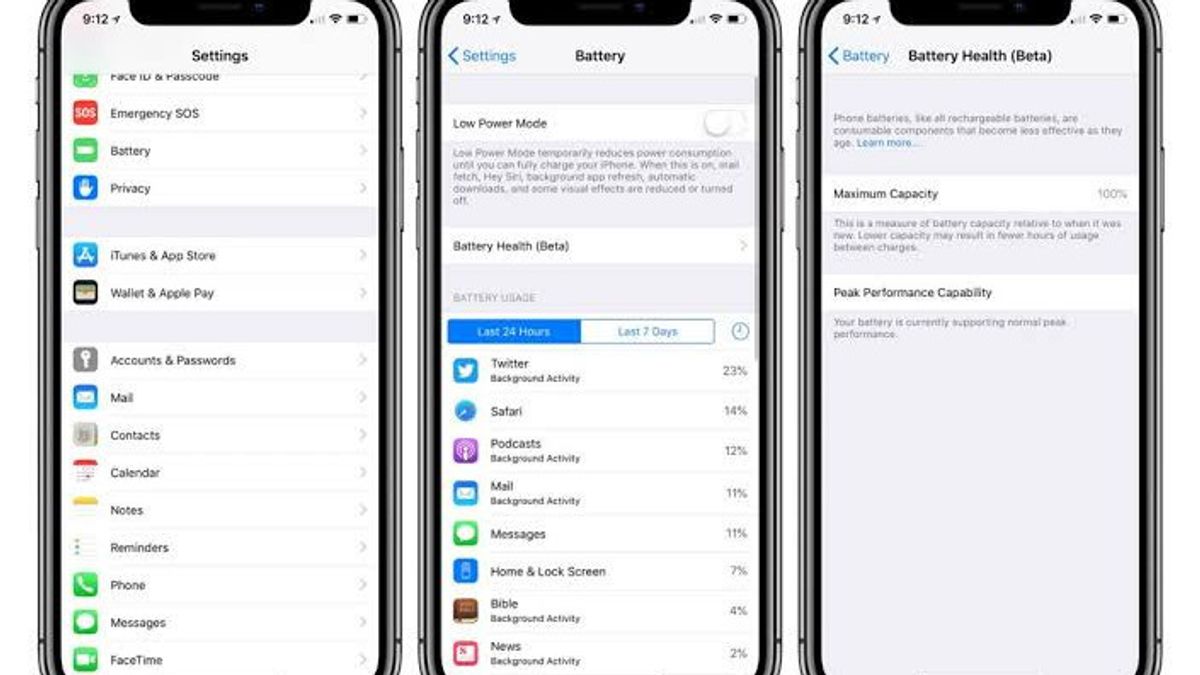JAKARTA - When your iPhone can't charge after a whole day or suddenly die, it's possible that your phone battery is problematic. Do you have to replace it?
In fact, this is a common problem, as all battery health will decrease over time, as it affects the use of your phone.
For those of you who have problems with this, usually replace your iPhone battery immediately. However, it's not without a high cost.
Before replacing it, it's great to check your iPhone first whether it needs to change the battery or not, as well as what you can do to extend your health.
How to Check the Health of Your iPhone Battery
Your iPhone battery can be less effective over time, but you can also have a broken battery on your new iPhone.
To check quickly whether there is a problem with your battery health, open Settings click Battery select Battery Health & Charging. If you run anything below iOS 16.1, the last one will appear only as Battery Health.
At the top, you'll see the maximum capacity of your battery, which should be 100 percent, or close to that, if you have a relatively new iPhone.
However, if you look at your current battery supporting normal performance, you don't have a battery problem that is recognized and you don't have to replace it.
When to Change Your iPhone Battery?
It happens when you see one of the messages below.
1. This iPhone died suddenly because the battery could not provide the required peak power.
2. Performance management has been implemented to help prevent this from happening again/You have manually disabled performance management protection.
3. This iPhone cannot determine battery health. Apple Official Service Providers can service batteries. More about service options.
4. Your battery health has dropped dramatically. Apple Official Service Providers can replace batteries to restore full performance and capacity.
How to Extension the Time to Use Your iPhone Battery
Launching CNET, Friday, December 30, the sooner you go through your daily battery life, the sooner your overall battery life will decrease, so here are some tips to follow.
1. Update to the latest available software.
2. Adjust the brightness of your screen ( manually or automatically) as needed.
3. Use Wi-Fi when available.
4. Enable Low Power Mode as needed.
5. Deactivating the Background App Refresh (Overall or per app).
6. Turn off Location Services (Overall or per app).
7. Turn off Allow Notification and turn on Airplane Mode if necessary.
8. When you charge your phone with a computer, make sure your computer is connected.
The English, Chinese, Japanese, Arabic, and French versions are automatically generated by the AI. So there may still be inaccuracies in translating, please always see Indonesian as our main language. (system supported by DigitalSiber.id)
Tags les plus populaires
#Prabowo Subianto #Nouvel An #accident d’avion #Hasto Kristiyanto #nataru #squid game 2Populaire
05 Januari 2025, 08:25













